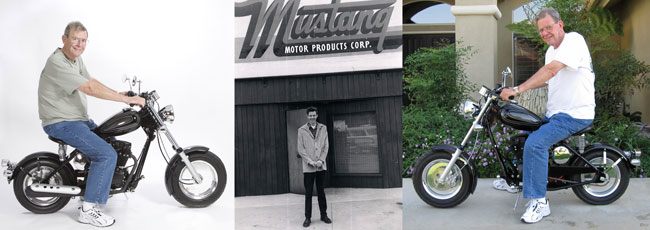
Yep, today is the day…Jim Cavanaugh’s birthday! Please join us in wishing the best to our good friend Jimbo!
And what better way to celebrate Jimbo’s birthday than to include the story of Jim, the Mustang Motor Products Corporation, and how the original Mustang led to the creation of your favorite motorcycle company! Here’s the story we include on the California Scooter Company website and often send to people who ask about our company…
The Mustang Legend Returns
In 1949 a young Jim Cavanaugh was walking along Brand Boulevard in Glendale, California. Cavanaugh needed a job badly, and as he walked by an open door, he heard a voice:
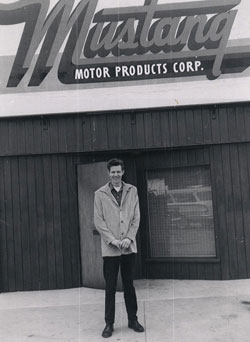
Jim Cavanaugh...the early years in Glendale
“Hey, kid!” Turning round and pointing to himself, Cavanaugh heard the man again: “Yes, you! Come here!” Cavanaugh approached the man and he heard, “You want a job?”
“Yes!” Cavanaugh answered.
“Okay, you’re hired…and do you know why I hired you?” the man asked.
“No,” Cavanaugh answered.
Sizing Cavanaugh up, the man said, “You didn’t ask how much it paid, or what the job is!”
With that brief interview, Cavanaugh landed a job (with a steady wage of $1.05 an hour) and began his career with Gladden Products, a business that would become the Mustang Motor Products Corporation.
Gladden Products manufactured aircraft parts during World War II. John Gladden was an astute businessman, and as World War II ended, he knew his government aircraft contracts would end. Gladden needed a new product to keep his factory humming.
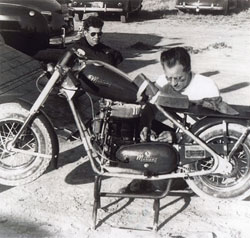
Forrest and Gardner working on a Mustang
Gladden’s chief engineer, a brilliant man named Howard Forrest, was a skilled engineer, a machinist, and motorcycle enthusiast. Forrest rode an Indian twin, but he wanted to create his own motorcycle. Forrest designed and built a four-cylinder, 300cc, water-cooled engine. He next bought a Salsbury motor scooter (manufactured in nearby Pomona, California) and shoehorned his engine into it.
While working for Gladden, Forrest continued to refine his custom Salsbury. It was good, but not good enough. The next steps were inevitable for a man like Forrest. He designed a completely new motorcycle, he used his 300cc engine to power it, and he rode the thing everywhere.
John Gladden noticed Forrest’s creation, and he immediately recognized its potential. Gladden needed a new product line, and Forrest’s motorcycle was just the ticket. Gladden talked to Forrest and his friend Chuck Gardner, a fellow engineer and rider. Gladden challenged the two engineers: He wanted to make lightweight motorcycles, and he needed a design. Forrest and Gardner dove into the new project.
Gladden, Forrest, and Gardner wanted a new look, a new feel, a new name, and a completely new motorcycle. They wanted to stay away from the boxy look of other small bikes, and after several attempts, they nailed it. They created a unique look with a unique product – a scooter-sized bike with motorcycle style.
Gladden already had the name. The new bike would be the Mustang. Legend has it that the bike’s name came from the horses that ran free on the American prairies. Or maybe it was based on the P-51 Mustang, one of the hottest fighters in all of World War II. Gladden had, after all, made aircraft parts during the war.
The first Mustang used a British 125cc Villiers two-stroke engine with a forward-inclined cylinder and integral gearbox. It had a steel frame with 8-inch wheels. They called it the Colt, and the company hand-built 237 under the direct supervision of Forrest and Gardner.
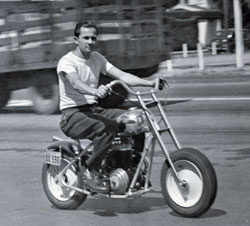
Chuck Gardner on a Mustang
The results of the Gladden, Forrest, and Gardner effort would become a motorcycle legend, but only because the Mustang Motor Products Corporation wasn’t sitting still. Mustang wanted to rock the motorcycle world, and rock it hard.
Gladden, Forrest, and Gardner soon developed a new machine, and early in 1947 they introduced a new Mustang with many advances (many of these advances were revolutionary at the time, and many are incorporated on today’s California Scooter). The wheels were solid 12-inch disks, and the new bike had telescopic forks – a first for a U.S. motorcycle. Western-style handlebars, a double-tube frame, a classic teardrop gas tank, and a low 27-inch spring saddle gave the bike its classic looks. Forrest and Gardner had created a new niche – a scooter-sized motorcycle with beautiful styling. The Mustang style remains unique to this day.
Mustang Motor Products Corporation added employees as the business grew, and Jim Cavanaugh moved up to become the Production Manager. Forrest and Gardner continued to engineer improvements. For the 1960 model, Gardner designed a swing-arm rear suspension on the new Thoroughbred, along with a long dual seat and a toolbox. Mustang offered a broad palette of new colors. The bikes were magnificent.
The Mustang’s advances weren’t just about style, though. Mustangs won races and set speed records. The Mustang’s high power-to-weight ratio and ultra-responsive handling made news, especially when Walt
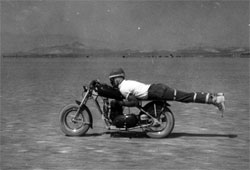
Walt Fulton at 100 mph on a Mustang
Fulton became a factory rider. Piloted by Walt Fulton, a Mustang nearly won the 1951 Catalina Grand Prix. Starting in last position, Fulton passed 145 riders (and no one passed Fulton) before the bike broke. Fulton would have won Catalina had the bike hung together, and the big boys took note. The Mustang’s short wheelbase and small diameter wheels provided handling vastly superior to the big bikes. Other manufacturers put pressure on the Rules Committee, and suddenly the rules changed. Any motorcycle with small diameter wheels could no longer compete. Undaunted, Fulton proceeded to set speed records, using an unorthodox riding style to reduce aerodynamic drag.
In the 1960s, the world was changing. “You meet the nicest people on Honda” became a sales slogan that forever altered the motorcycle landscape. Honda and other Japanese motorcycle manufacturers started importing bikes into the United States in large numbers, and the Mustang Motor Products Corporation’s days were numbered. Production at the Glendale factory ended in the early 1960s after the factory had produced over 20,000 Mustangs. An automobile company quickly picked up the Mustang name and used it to start an automotive revolution.
Just after the Mustang Motor Products Corporation started making motorcycles, a young 14-year-old Eddie Seidner wanted a Mustang so bad he could taste it. Eddie’s friend Billy Buster had a Mustang, and Ed wanted one, too. From its chrome headlight to its black peanut tank, everything about it was cool. Ed Seidner grew up and literally created a motorcycle business empire, but he never got his Mustang. He still wanted one.
Steve Seidner (Ed’s son) started as a mechanic’s helper in his dad’s service department in 1969 and worked his way through every position in his father’s dealership. Steve learned well. The apple doesn’t fall very far from the tree, and like Ed, Steve is an entrepreneur. Steve opened Pro-One Performance Manufacturing in 1989. Pro-One builds some of the most exotic performance V-twins on the planet. Steve’s a builder and creative genius, and his new business was a runaway success.
Steve grew up hearing stories from his father about the Mustang, what a great machine it was, and how he always wanted one. Steve listened to stories about Billy Buster’s Mustang for decades, and in 2008, he did something about it. Steve bought an original 1953 Mustang on eBay, he joined the Mustang Motorcycle Club of America, and he met Jim Cavanaugh. “Jimbo” and Steve immediately became friends.
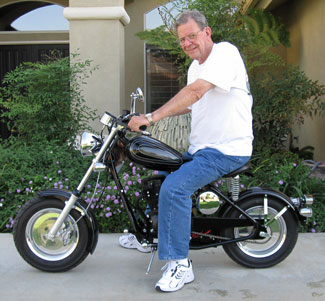
Jimbo and his new California Scooter
Steve intended to restore the 1953 Mustang, but the more he learned about the original Mustang, the more three facts came into focus:
- The Mustang design and build quality were phenomenal. Steve’s ‘53, after sitting dormant for decades, started up on the first kick after he cleaned the lines and put fresh fuel in it.
- The unrestored Mustang was a magnet. Customers who were buying $40,000 performance V-twins would walk right past the big bikes to get a better look at the Mustang.
- Building a modern version of the Mustang could be a winning formula. The bike has incredible style and appeal, and it has a look that still turns heads.
Steve made a decision. He would build a modern motorcycle taking its styling cues from the original Mustang, and he would do it in California (just like the original Mustang). He wouldn’t call his new bikes Mustangs (that name is sacred and it belongs to the original Glendale machines), but Steve wanted the machines to be the bikes Mustang would be building today if they were still in business.
Jim Cavanaugh signed on as an advisor to the California Scooter Company, and a great new business was born. Steve’s mechanical genius and production know-how gave birth to a modern motorcycle company with the spirit of the original Mustang Motor Products Corporation.
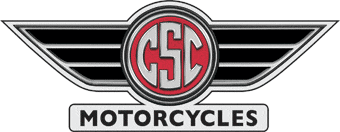





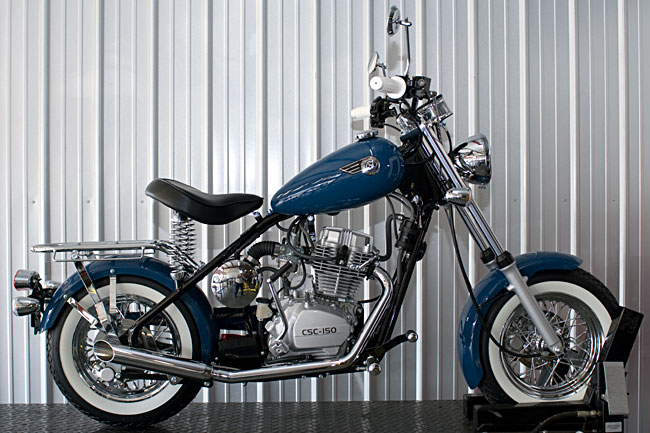
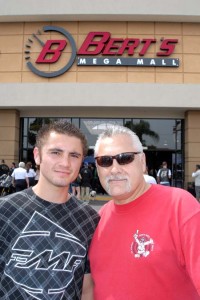
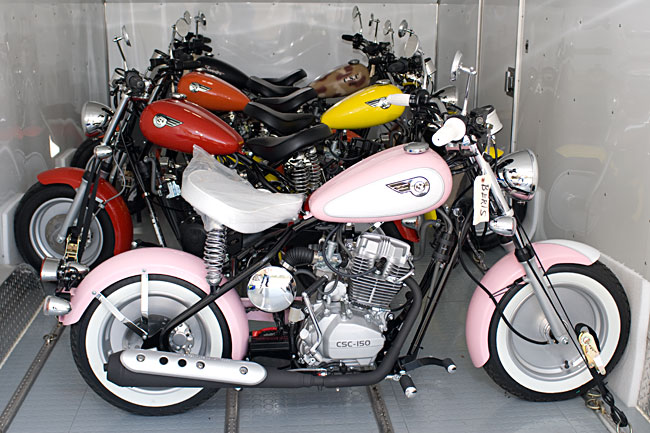
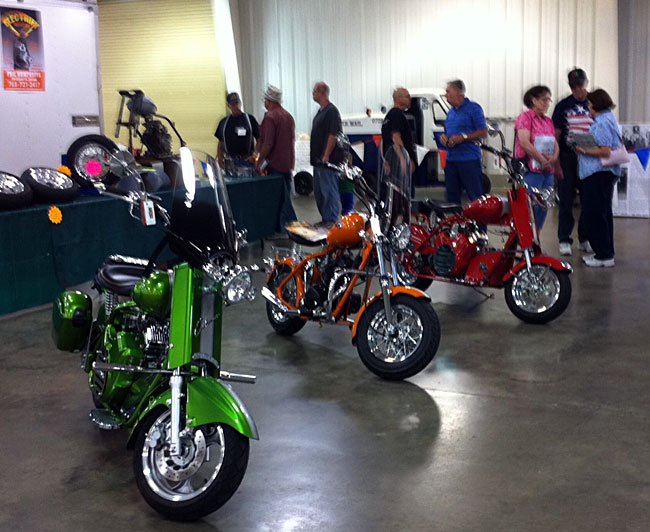
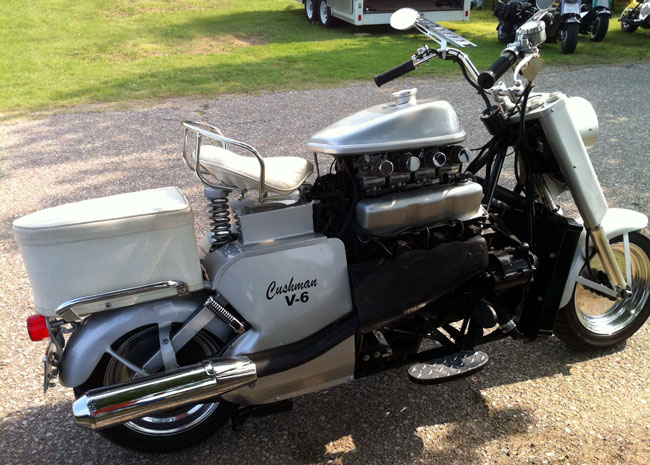
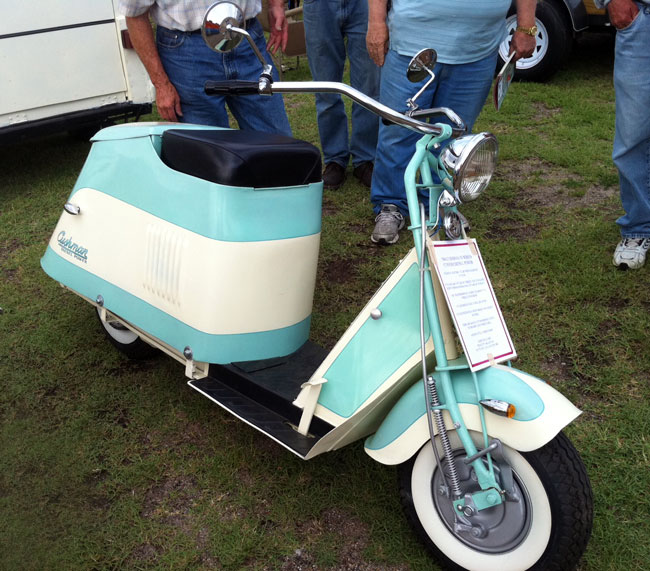
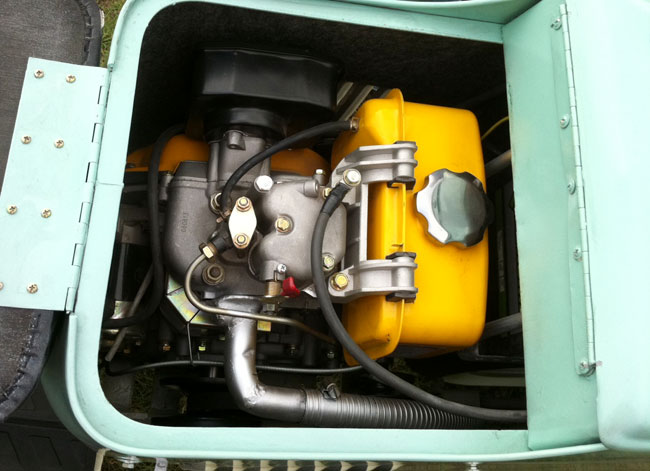
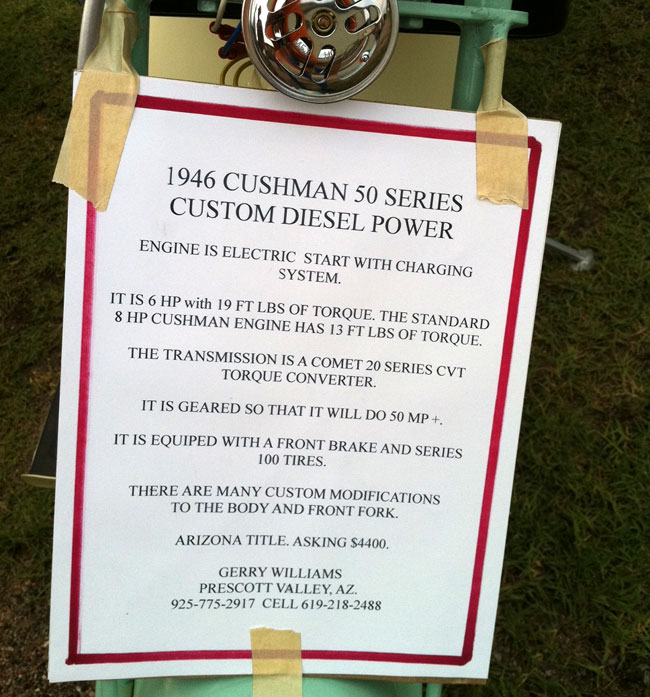
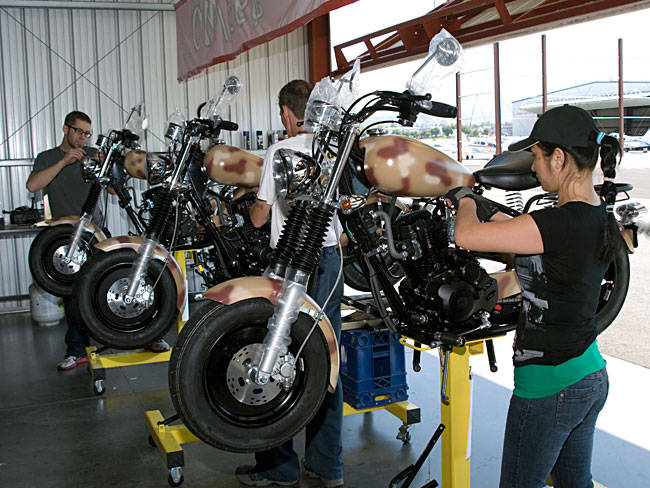


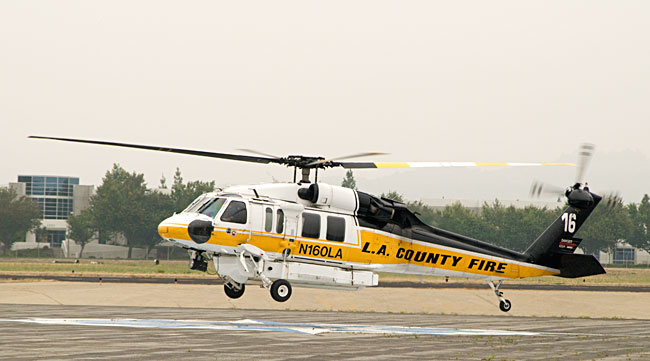
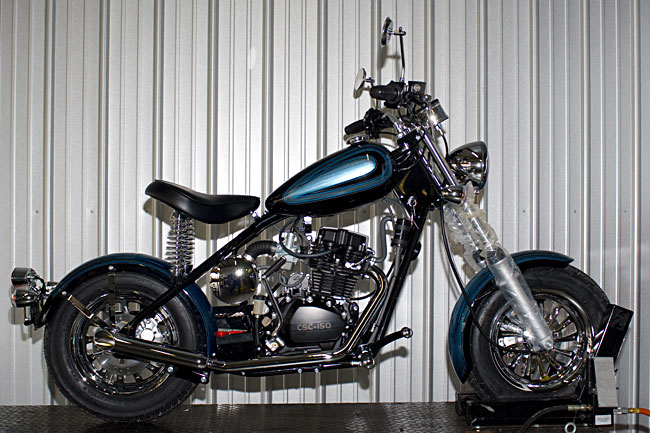
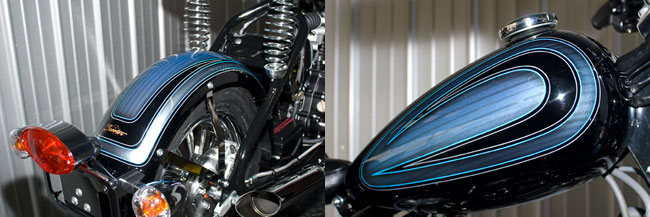
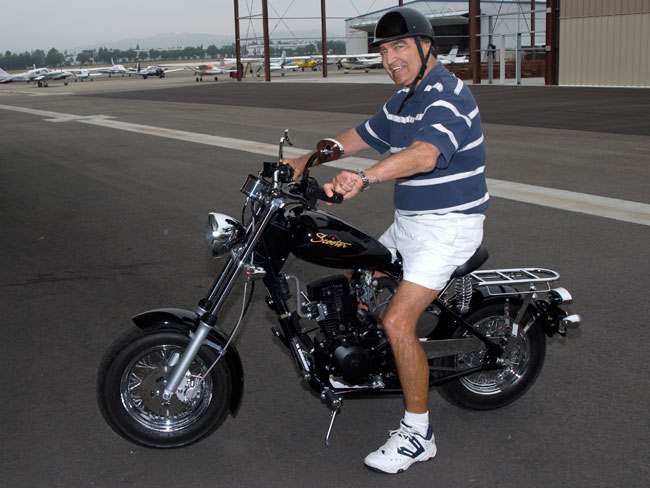
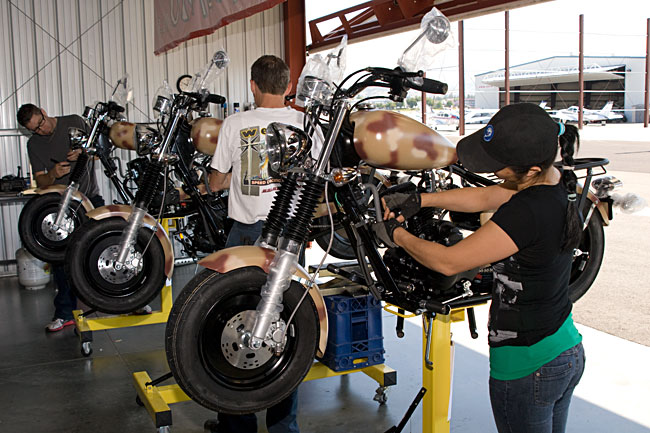
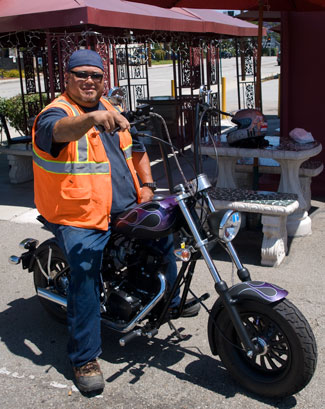
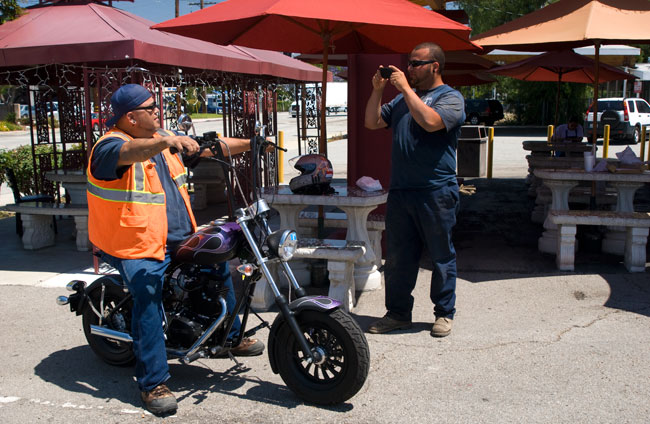
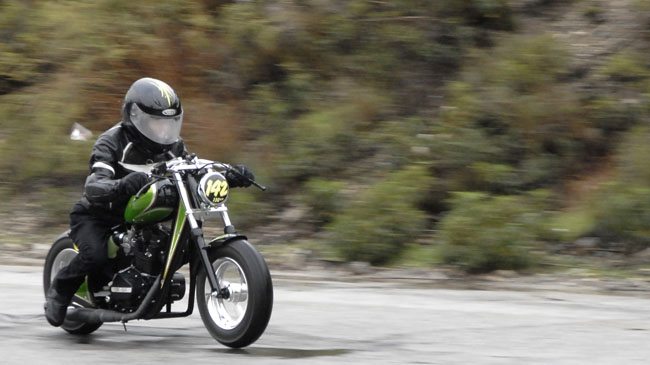
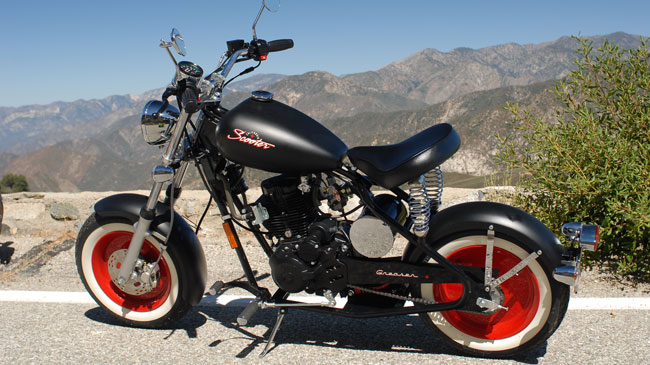
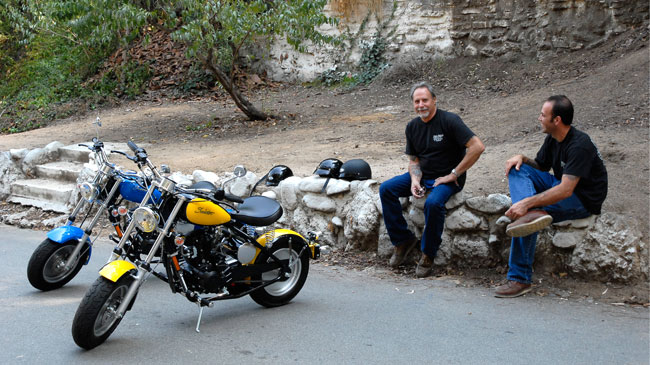
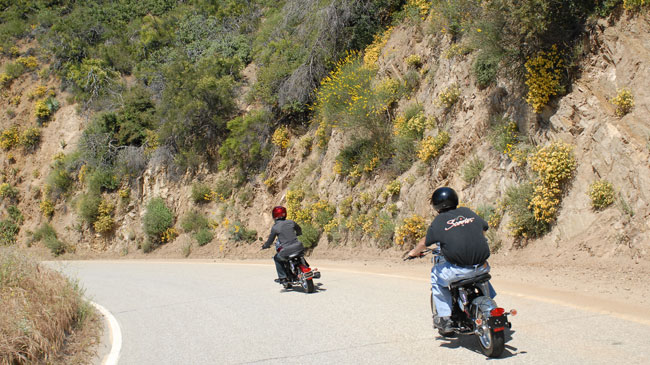
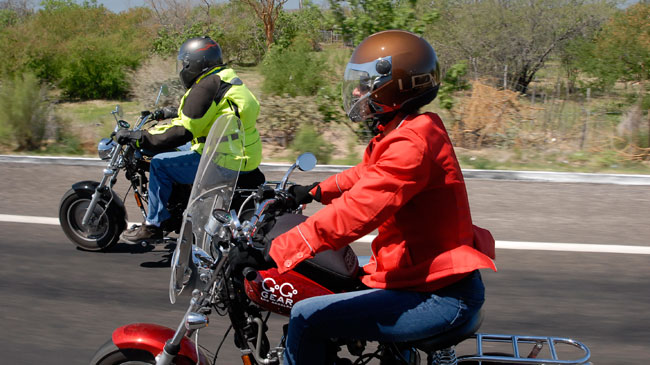
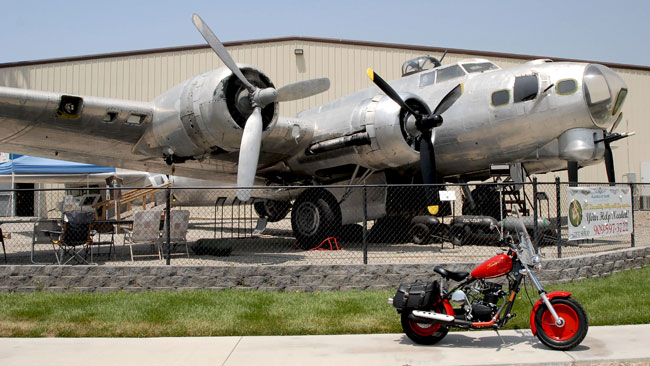






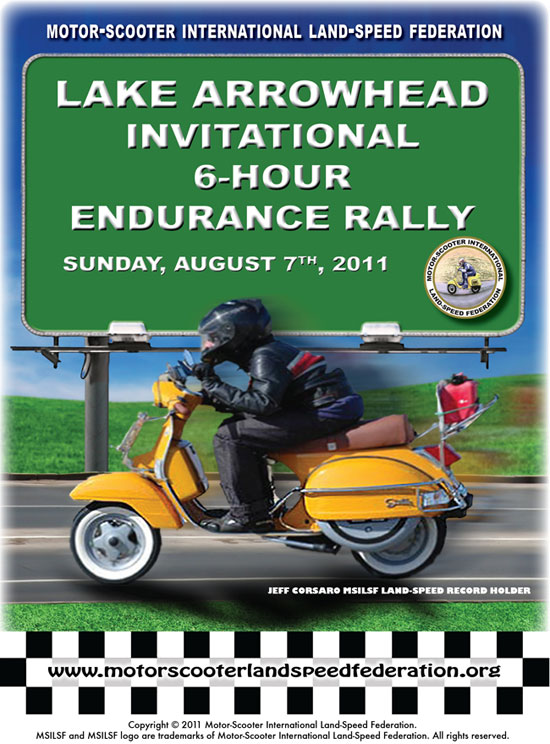
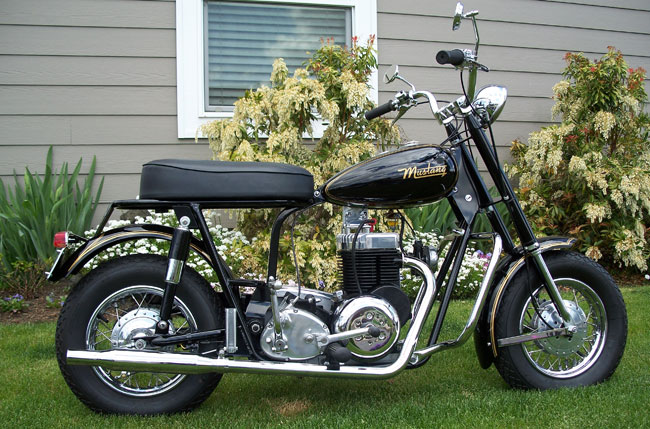
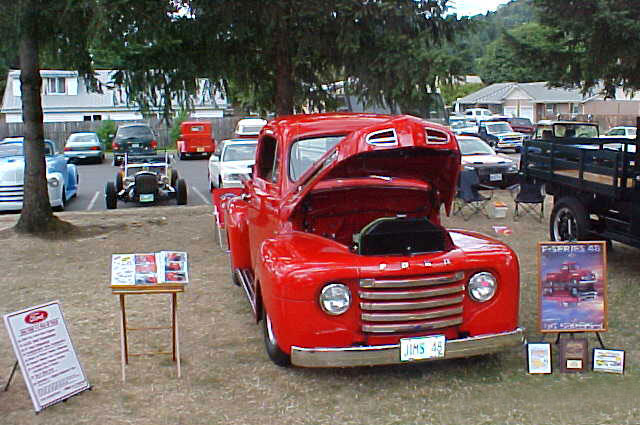
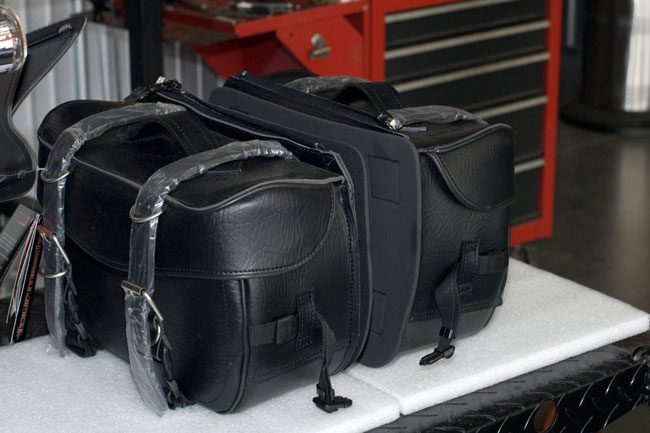
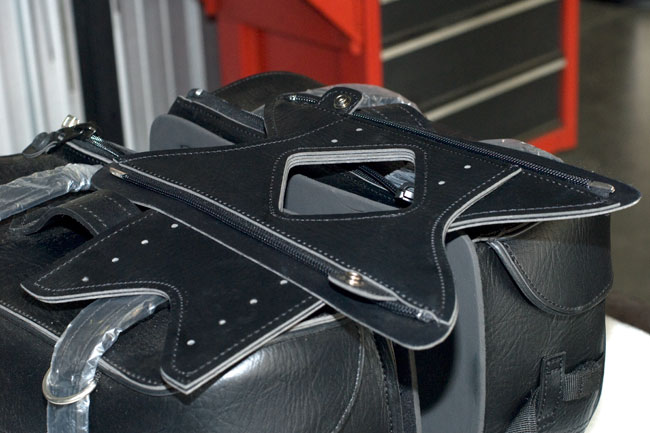
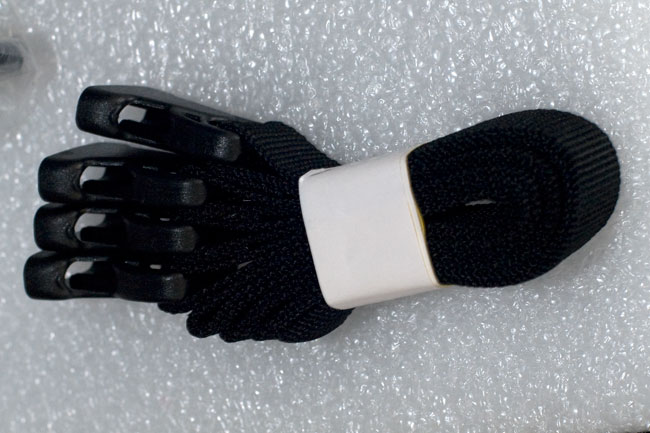
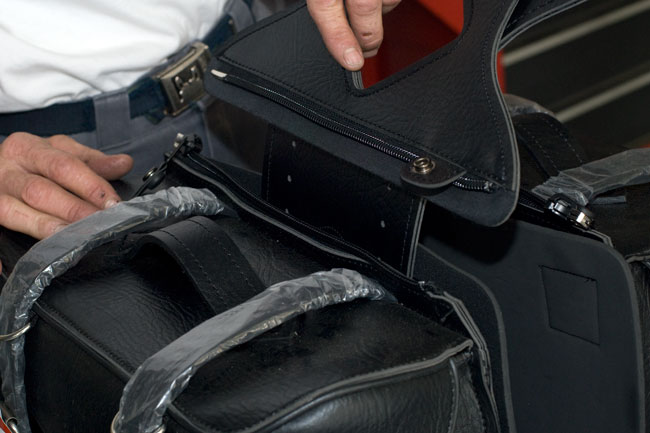
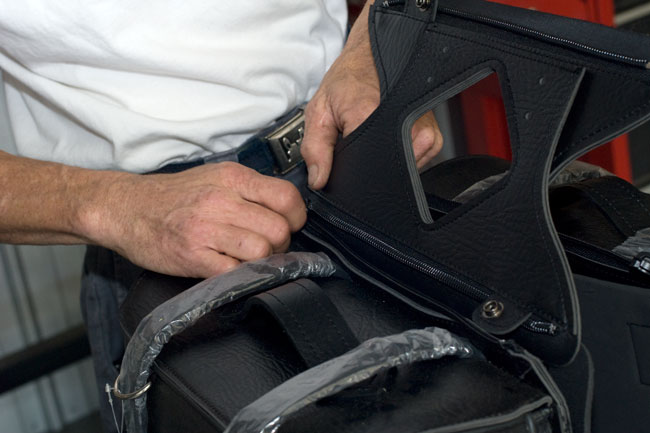
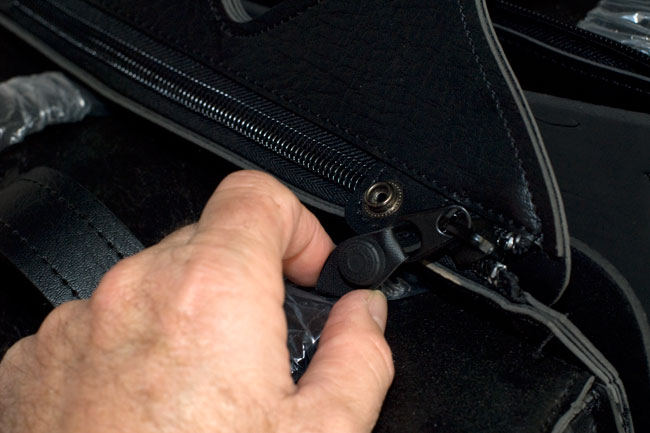
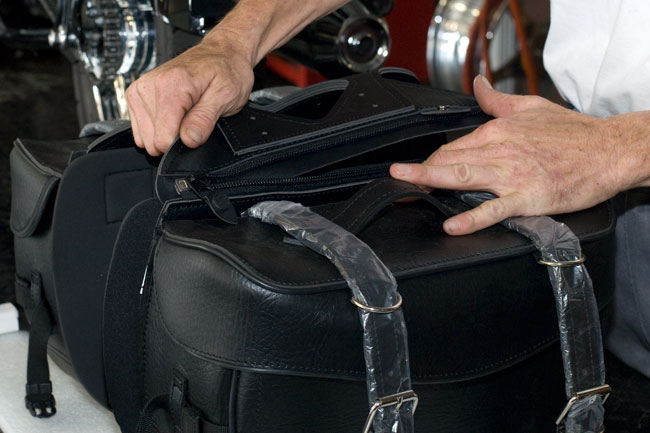
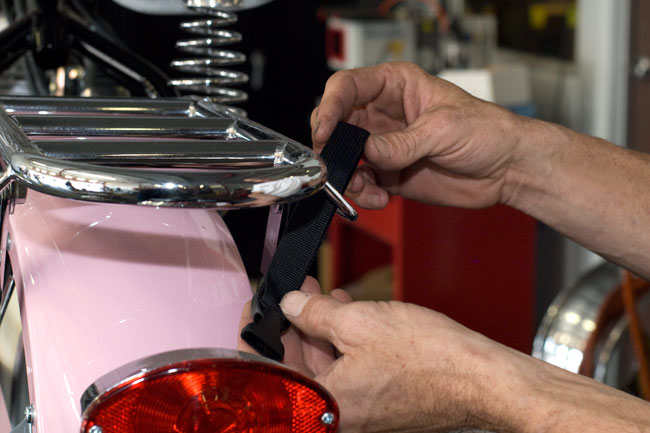
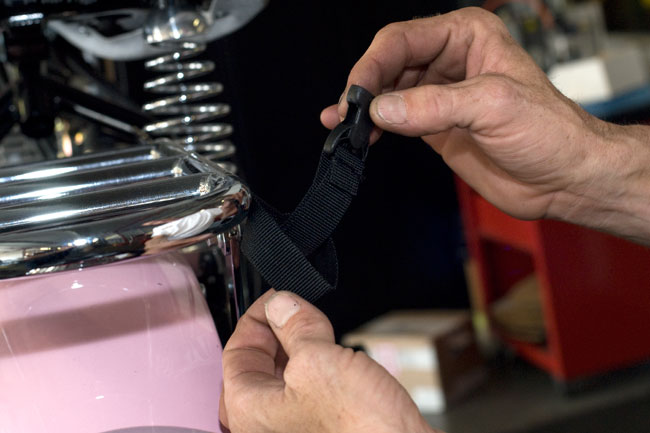
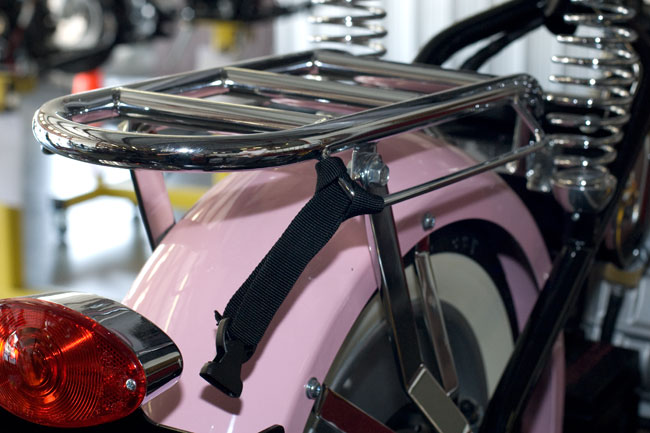
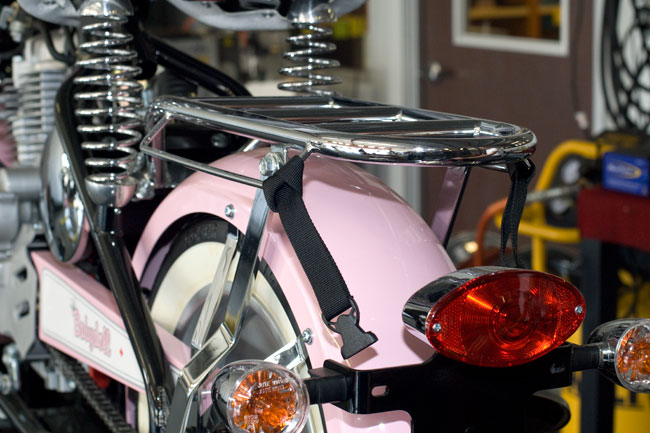
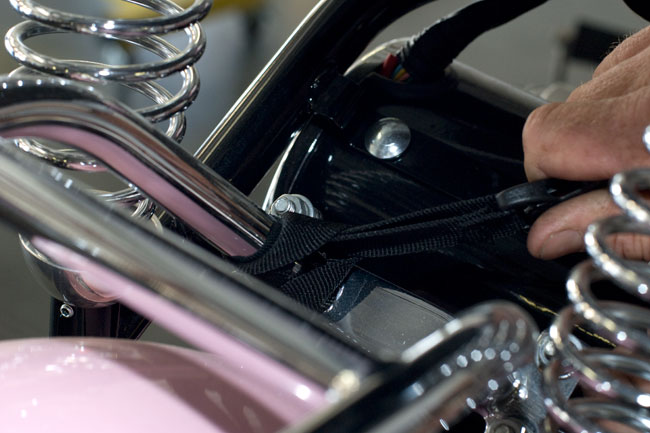
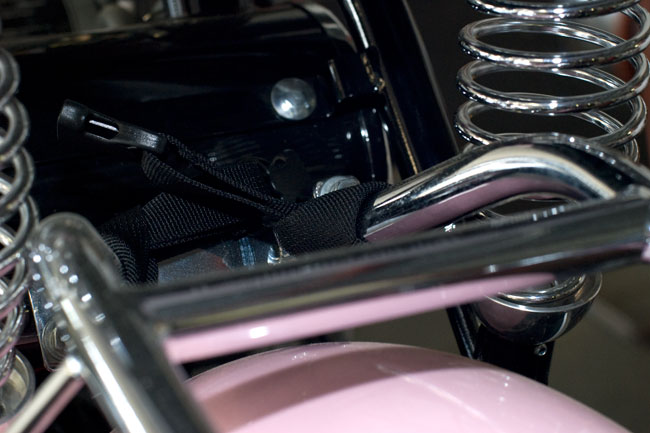
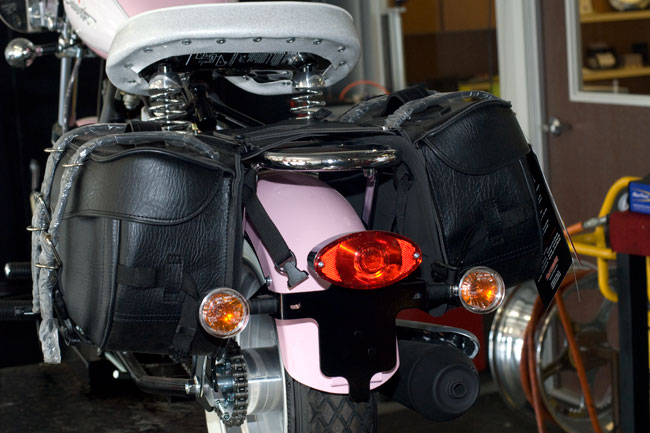
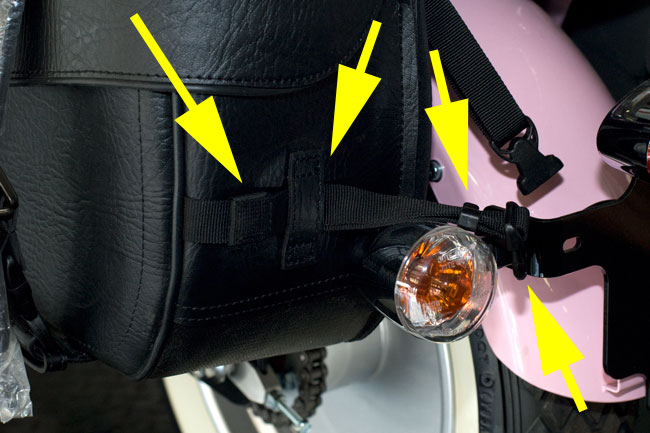
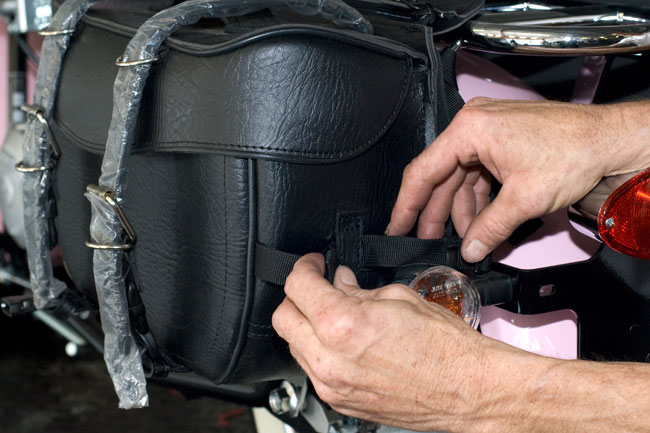
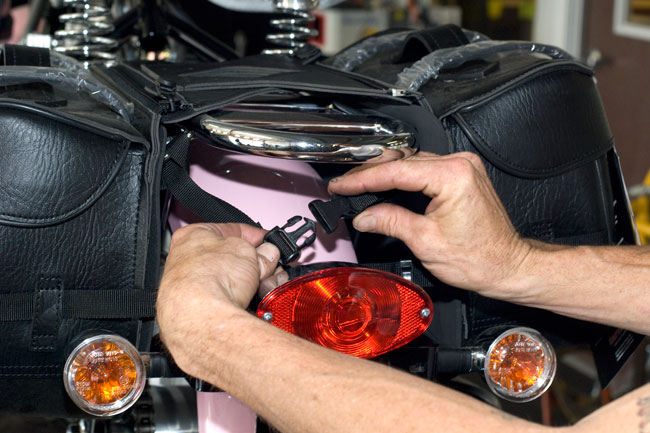
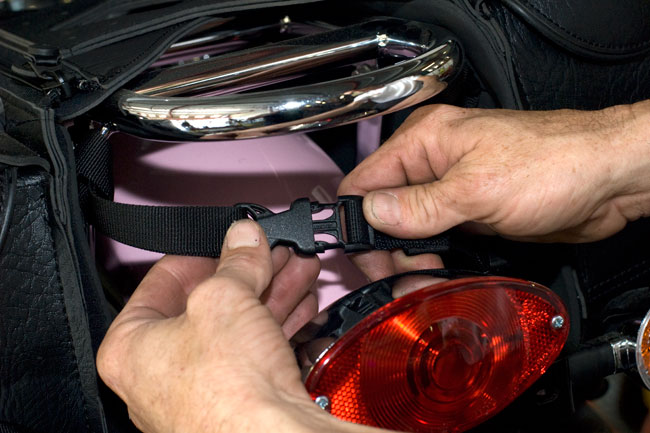
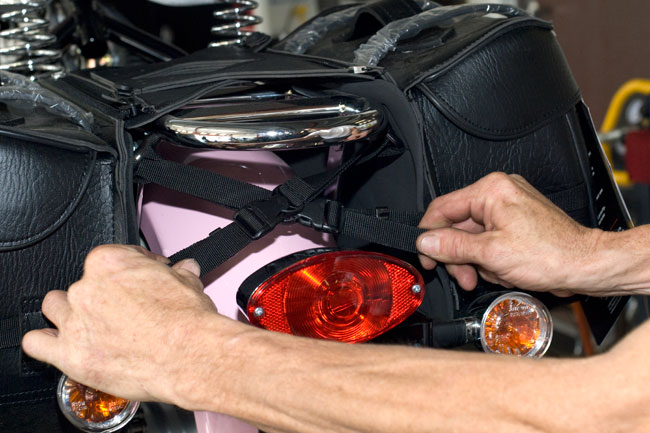
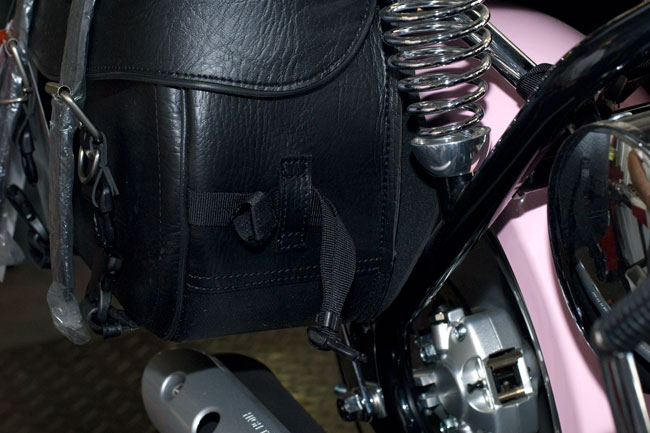
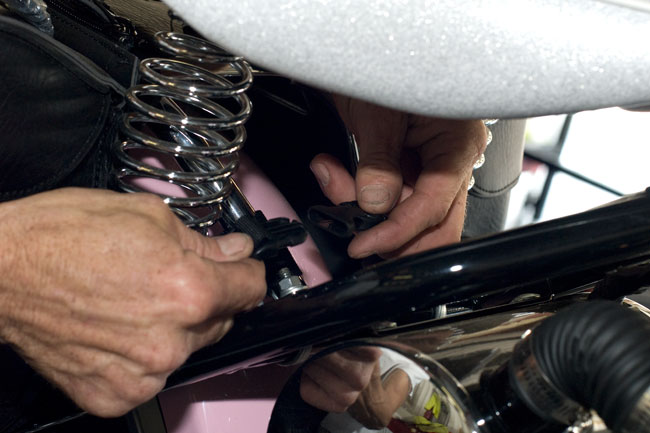
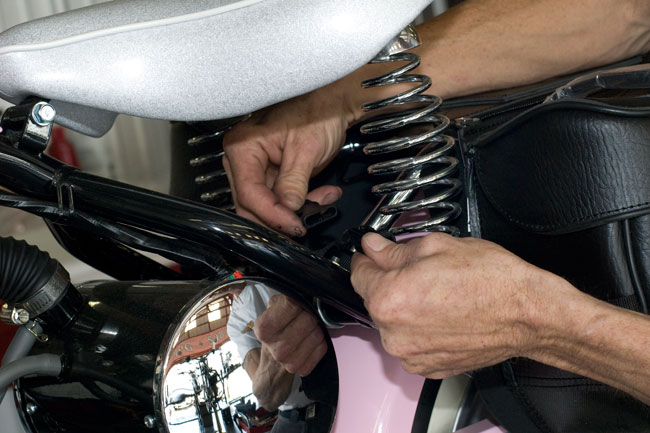
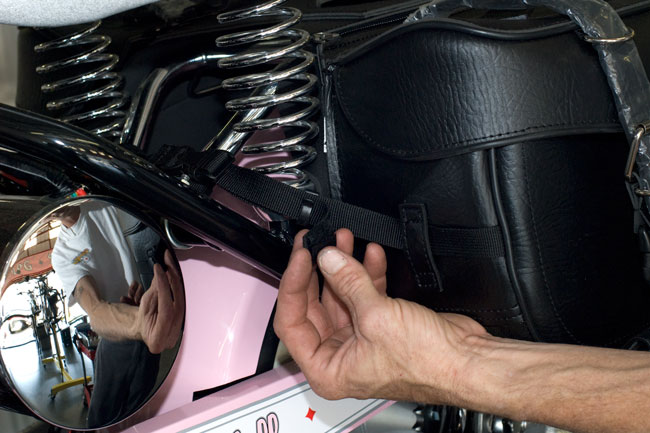
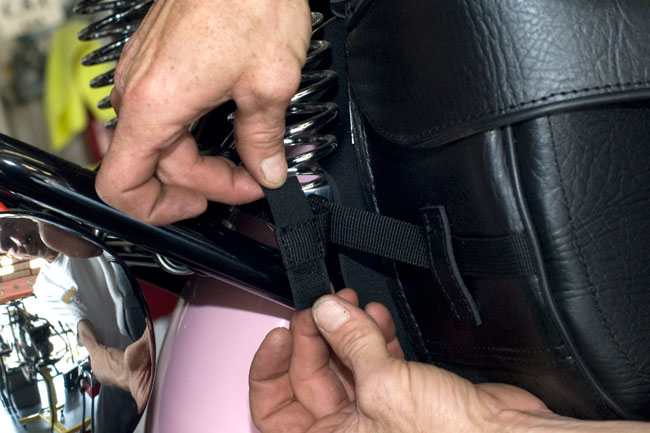
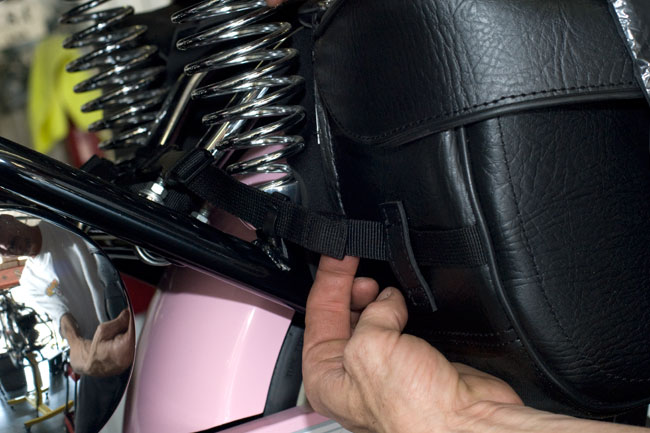
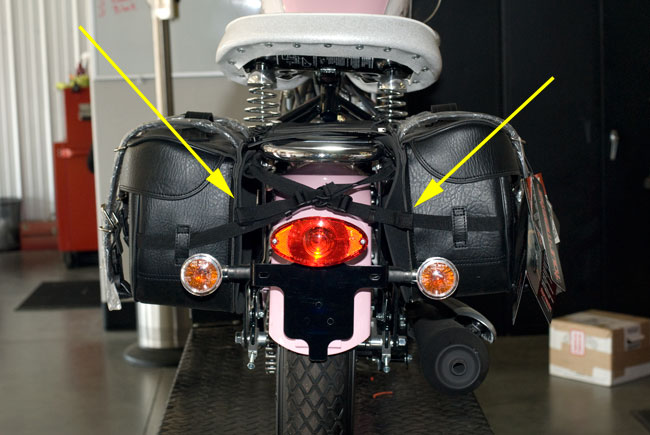
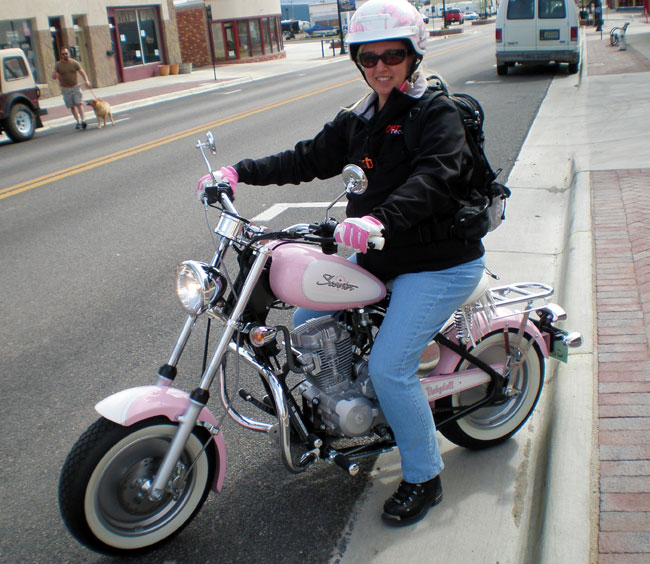
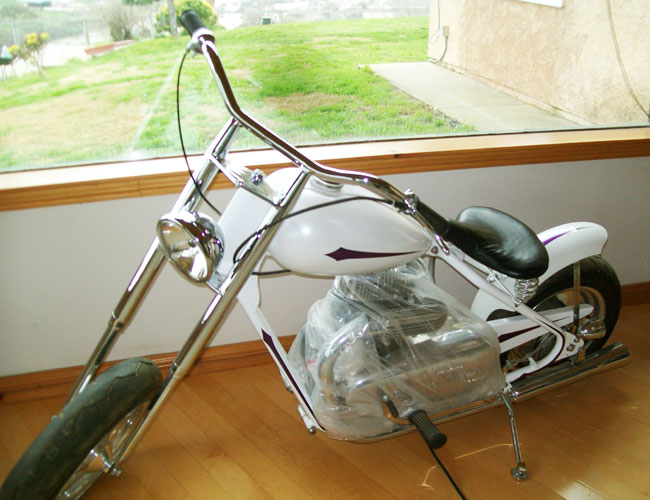
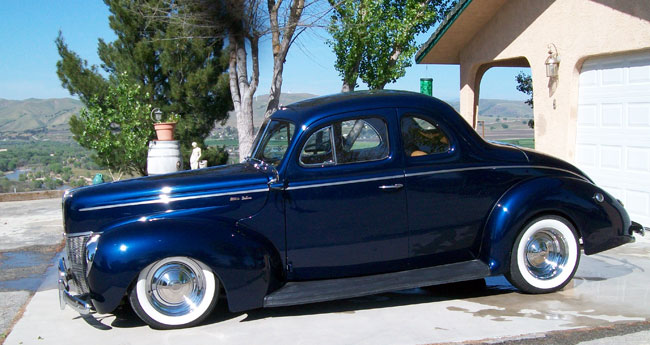
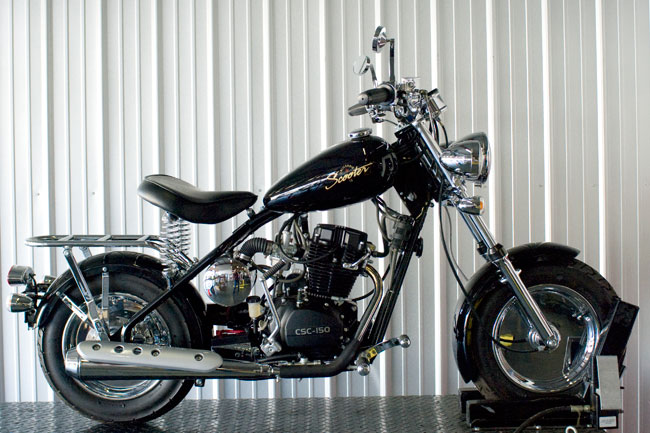
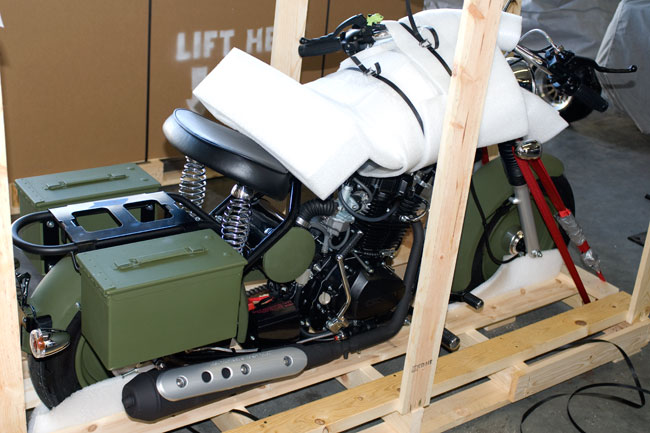
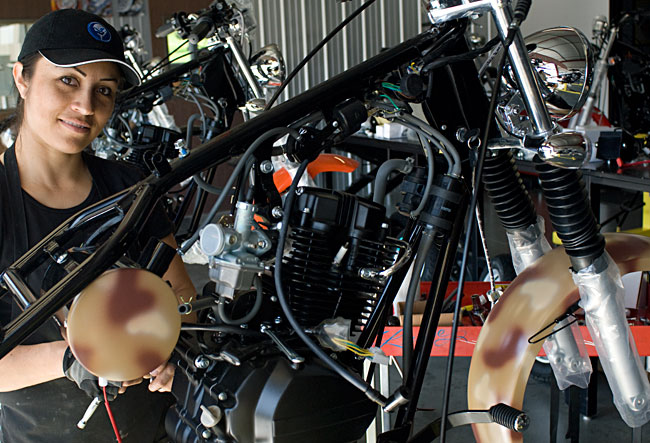
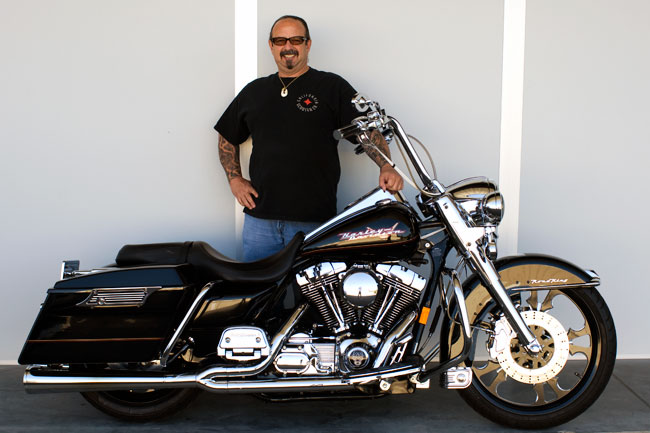
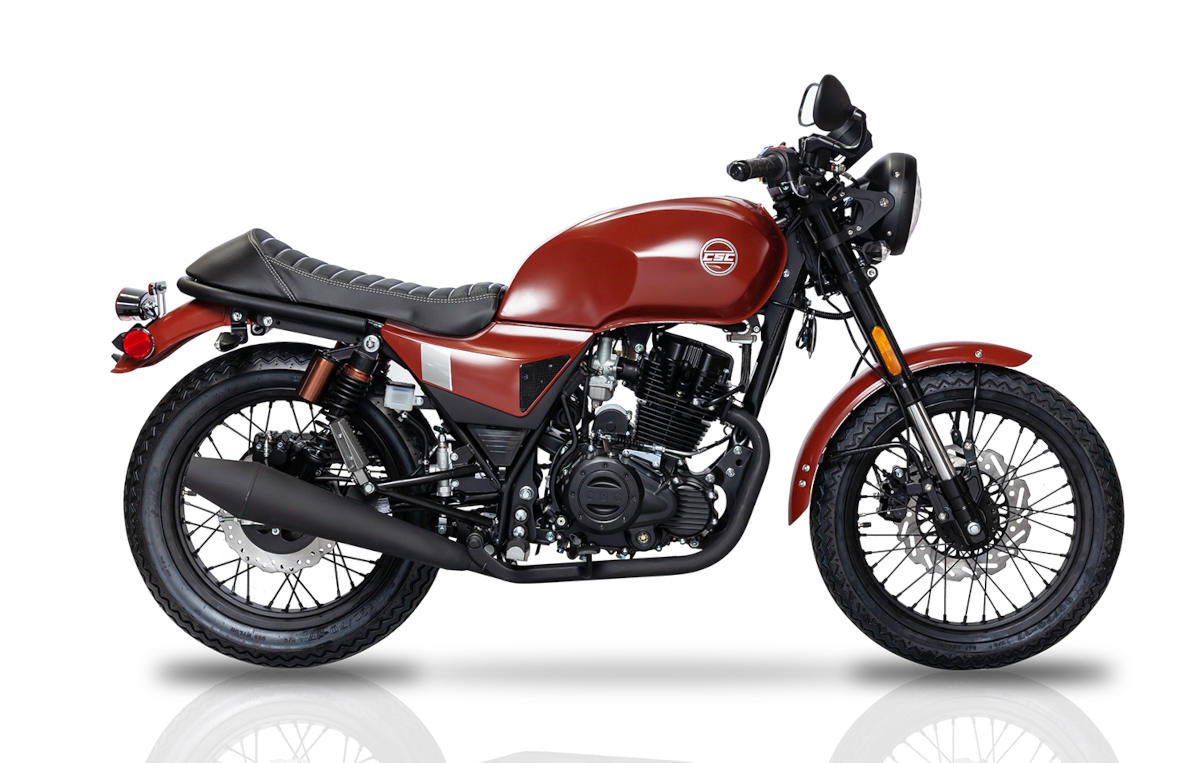 SG250 San Gabriel Cafe Racer
SG250 San Gabriel Cafe Racer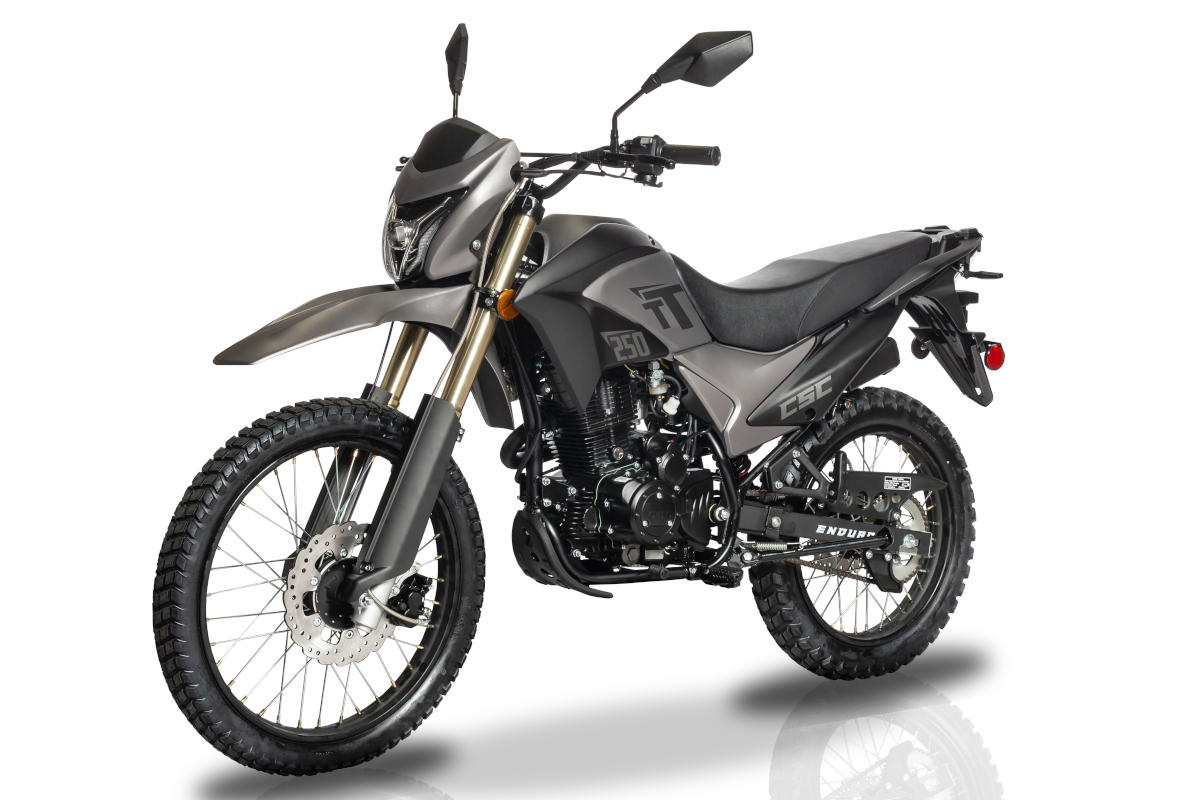 TT250 Enduro
TT250 Enduro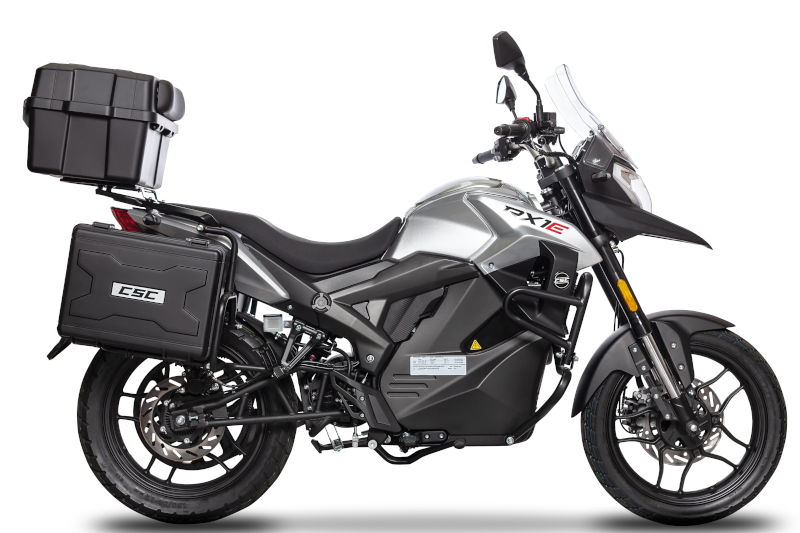 RX1E Electric Motorcycle
RX1E Electric Motorcycle